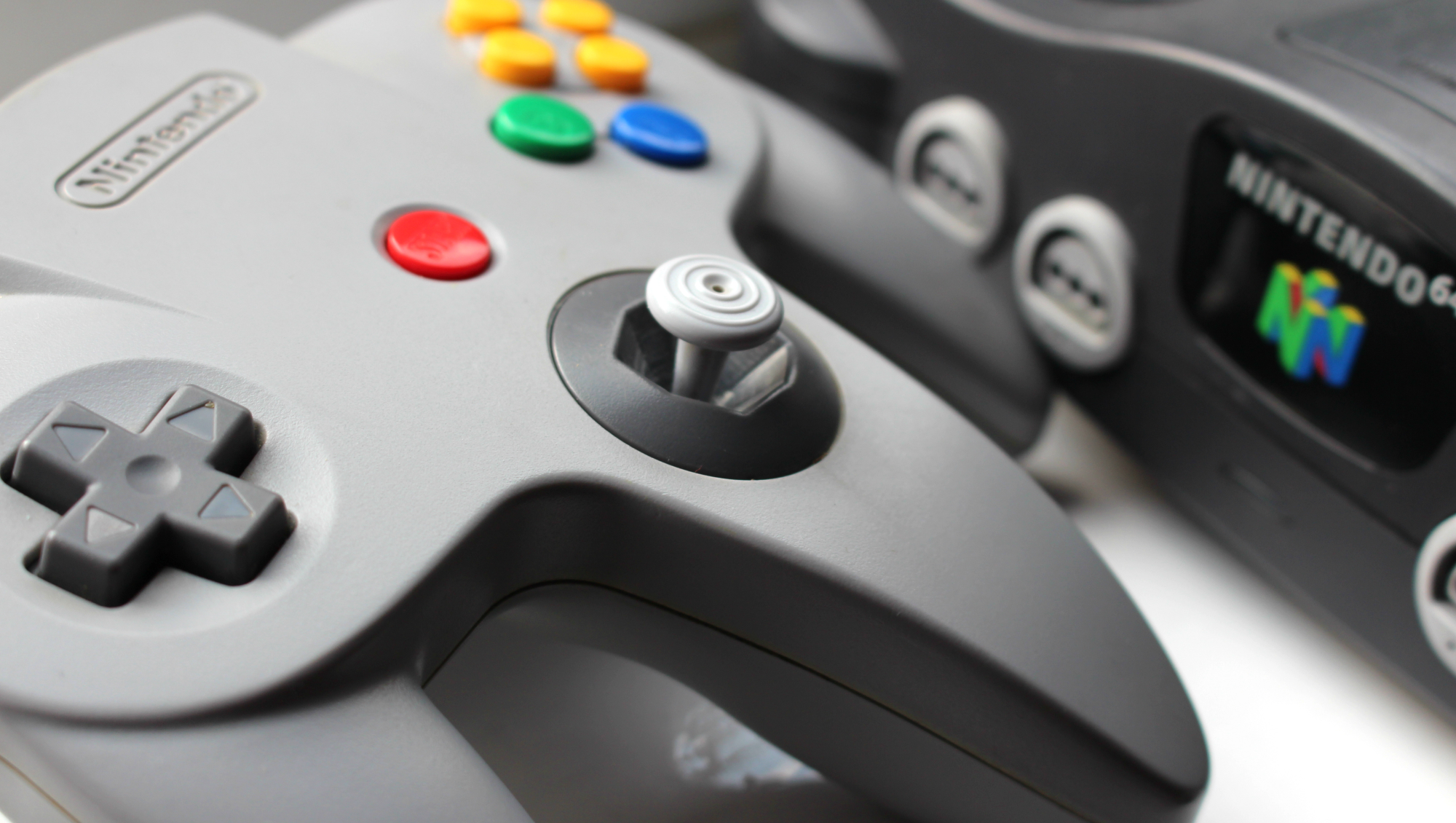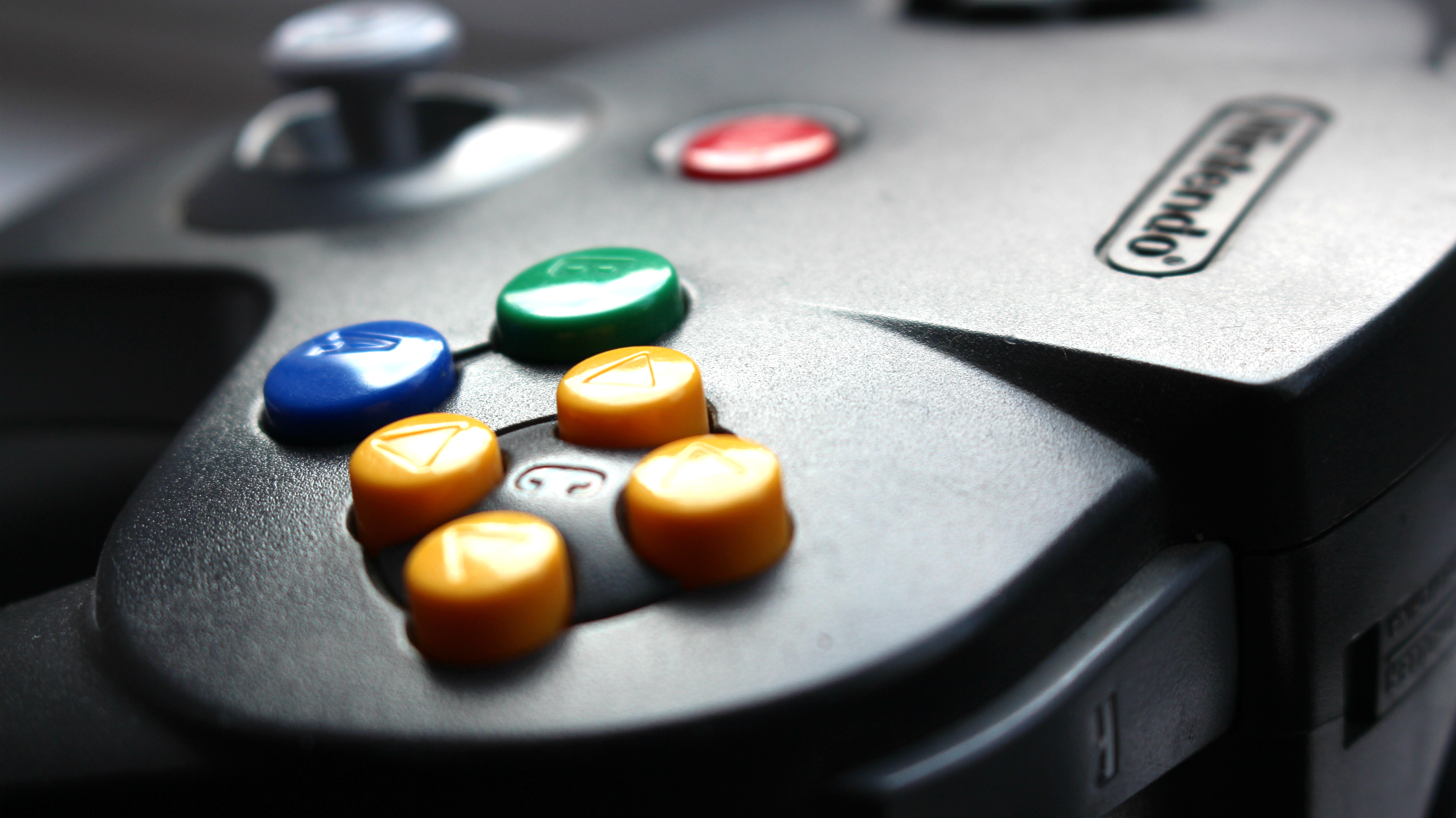Why the N64 controller is the most important of all time
Paving the way for the Nintendo of the future

Whenever you pick up a joypad these days, one thing is common – the presence of analog control. It's impossible to imagine playing a modern game without this level of precision, but it's easy to forget that two decades ago digital control was the norm.
The system that changed everything was the Nintendo 64, which turns 20 this very year, and released in the US on this very day, September 26, back in 1996.
Defining the way we play
Nintendo has a history of defining the rules when it comes to gaming interfaces. It was the first company to use the now-commonplace "Digital Pad", incorporating it into its line of Game & Watch portable LCD systems when it became clear that a joystick wouldn't suit the mobile nature of the titles.
The N64 pad arguably ranks as Nintendo's most groundbreaking pad
The D-Pad would also be factored into the iconic NES controller, which also bucked industry trends by offering two action buttons rather than the traditional one. Years later the company would break new ground again with the SNES pad's ergonomic design, diamond-shaped four-button cluster (another common sight on modern pads) and left and right shoulder buttons.

Even when compared to these notable examples of innovation, the N64 pad arguably ranks as Nintendo's most groundbreaking pad, and perhaps the most significant and lasting development in the evolution of gaming controllers the industry has ever witnessed.
An analog adventure
It wasn't the first pad to offer analog control by a long way – the Radofin 1292 Advanced Programmable Video System, released in 1976, has that distinction, and both Atari and General Consumer Electronics used analog control in their 5200 and Vectrex systems respectively – but these had minimal impact and by the mid '80s digital control had been accepted as the norm, at least on home consoles.
Sign up for breaking news, reviews, opinion, top tech deals, and more.
The N64 controller changed all of that in emphatic fashion. Not only was it the first truly mainstream console to include analog control as standard with its default pad, it offered a unique three-grip design which offered a wide variety of play options depending on the game.

For example, in FPS titles like the iconic GoldenEye 007 players could hold the middle "prong" with their left hand to benefit not only from analog precision but also use the Z-Trigger (located on the underside, like the trigger on a gun) and the C-buttons, the latter of which which enabled strafing.
For titles which worked better with digital control, the left prong could be used so that the player's thumb rested on the more traditional D-Pad. The majority of games opted to use the analog stick, but some – such as Konami's International Superstar Soccer 64 – gave players some choice by supporting both digital and analog.
Analog control, meet Mario
Of course, the benefit of any new control option is only evident in the software it supports, and in the N64's case it had the best showcase imaginable. Super Mario 64 was a launch game for the console and, for many players, serves as their first introduction to the world of 360 degree analog control.
Mario 64 was a revelatory moment not only for a generation of players
Prior to Mario's 3D adventure gamers had been accustomed to "tap-tap" digital control, but the Italian plumber's N64 debut offered the ability to gracefully sprint around on all degrees of the compass, smoothly transitioning from walking to running with the smallest push on the stick.

It was a revelatory moment not only for a generation of players, but the industry in general. Sony and Sega both released analog controllers for their PlayStation and Saturn consoles shortly after, and the Sega Dreamcast and Sony PlayStation 2 would launch with analog control as standard.
All rumble, no grumble
Another innovation found in the N64 controller was the introduction of force feedback via a special bolt-on cartridge.
Another level of sensory information
The N64 Rumble Pack required batteries to operate and made the pad somewhat unwieldy, but again proved to be ahead of its time; Sony's DualShock pad would follow suit and haptic feedback is featured on most controllers these days, offering the player another level of sensory information in addition to sound and audio.
You might argue that 2005's Wii Remote was arguably a bigger paradigm shift than the N64's analog stick. But the idea of waggling your arms around to interact with games appears to have suffered a slump with Nintendo itself shifting towards second-screen play with the Wii U and Microsoft all but dropping its controller-free Kinect option after a dismal early reaction on Xbox One.
Sony has also put out its PS Move concept out to pasture, but the controllers are being reappropriated for PlayStation VR – a platform that will surely benefit from motion control and could see a resurgence of interest.
Playing with the future
But we're getting off topic a little. Even when contemplating a potential rebirth of motion control via VR, few moments in the history of gaming can really challenge the time you first scooped up that odd-looking N64 controller and truly connected with Mario thanks to its precise and smooth analog input.

While the N64 was by no means a perfect system – hamstrung as it was by a reliance on expensive and limited cartridges which in turn meant a lack of third-party support – there's no escaping the fact that back in 1996 (or 1997 if you weren't lucky enough to get an imported machine), it felt like playing with the future.
Nintendo would refocus its efforts with the excellent GameCube controller which dropped the three-grip approach and adopted a dual-analog configuration, but by that point it felt as if Nintendo was competing on a level playing field with its rivals when it came to interface. The N64 pad was totally unlike anything that had gone before, and perhaps won't be equalled in impact again in this industry.
- ...unless the Nintendo NX proves to do something spectacular, that is...